#african american inventors
Explore tagged Tumblr posts
Text
Lanny Smoot: Prolific Inventor Of The HoloTile Floor and Innovator at Disney
Lanny Smoot, born on December 13, 1955, is not just an American electrical engineer and inventor, but also a prolific scientist and creator of theatrical technology. With a staggering achievement of over 100 patents, he stands as Disney’s most prolific inventor and is considered one of the most prolific Black inventors in American history. Throughout his career, Smoot has been dedicated to…

View On WordPress
#African American Inventors#Black American History#Black American Inventors#Black Inventors#Disney Imagineering#HoloTile#HoloTile Floor#Lanny Smoot#STEM#Walt Disney Imagineering Research & Development
7 notes
·
View notes
Text
The Unofficial Black History Book
Mary Beatrice Davidson Kenner (1912-2006)
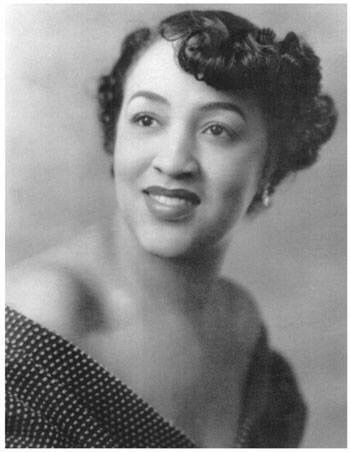



Mary Beatrice Davidson Kenner is a forgotten black inventor who changed the way menstrual pads operated, but her idea was turned down because of the color of her skin, and she was later not given credit for her invention.
This is her story.
Mary Beatrice Davidson Kenner was born on May 17th, 1912, in Monroe, North Carolina. She came from a family of inventors. Her father, Sidney Nathaniel Davidson (1890–1958), patented a clothing press that would fit into suitcases but never made money off of the invention, which failed. Her grandfather invented a light signal for trains, and her sister, Mildred Davidson Austin Smith (1916–1993), invented and commercially sold board games.
As a child, Kenner was interested in creating tools to make everyday life more convenient. She had her first idea when she was six years old—a self-oiling door hinge—but the idea never came to fruition. She would draw her ideas throughout her childhood. One of her ideas was a portable ashtray that would attach to the cigarette carton and a sponge tip that would soak the rainwater off an umbrella.
When Mary turned 12, her family moved to Washington, D.C., and she would often visit the United States Patent and Trademark Office to see if anyone had beaten her to patent any of her ideas.
Side Note: The Patent System - that started in 1787, was not open to African Americans who were born into slavery, even if freed, as it did not consider them citizens.
After graduating high school, Mary enrolled at Howard University but later dropped out when she couldn't afford tuition. She took on odd jobs and became a federal employee during WWII. She worked for the Census Bureau and later for the General Accounting Office. Mary also chaperoned younger women who attended dances at military bases in the Washington, D.C., area.
She met soldier and renowned boxer James "Jabbo" Kenner and married him in 1951. They adopted five boys but had no kids of their own. She retired from government work and opened a flower shop while continuing to work on her inventions.
By 1957, Kenner had saved enough money to file her first patent for an elastic belt that held sanitary napkins in place. Adhesive Maxi Pads didn't exist at the time.
How the invention worked was that a moisture-proof napkin pocket was built into the belt, which prevented more leaks than the cloth pads and rags women were using at the time.
One company. 'The Sonn-Nap-Pack' was interested in her invention and offered to market it. But when they discovered she was a black woman, they turned her down instantly.
"One day, I was contacted by a company that expressed an interest in my marketing idea. I was so jubilant...I saw houses, cars, and everything else about to come my way. Sorry to say, when they found out I was black, their interest dropped." She said in Laura F. Jeffery's Book, 'Amazing American Inventors of the 20th Century'
Because of racism, they did not patent the sanitary belt until 30 years after Kenner introduced it. But her invention was a crucial step for women's comfort and revolutionized menstrual hygiene during a time when women had limited options.
Between 1956 and 1987, Kenner received five total patents for her household and personal inventions. A backwasher that one could mount on the shower or bathtub wall was among Kenner's inventions for which she received a patent. When her sister was confined to a bed due to multiple sclerosis in 1976, it inspired her to file her third patent.
A special attachment for a walker or wheelchair that included a hard-surfaced tray and a soft pocket for carrying items. Also, a toilet paper holder that made sure the loose end of the roll was always reachable.
Kenner never became rich from her inventions, but her ideas centered on accessibility and ease and paved the way for more inventions in the future.
Mary Beatrice Davidson Kenner died at the age of 93 on January 13th, 2006.
__
Previous
Juneteenth
Next
The Tulsa Race Massacre
__
My Resources
https://www.diversityinc.com/womens-history-month-profiles-mary-beatrice-davidson-kenner-inventor/
#the unofficial black history book#mary beatrice davidson kenner#black history matters#black history 365#black stories#herstory#blackblr#little known black history#forgotten black figures#black figures#for the culture#black activism#black women#black inventors#black female writers#black tumblr writers#writing community#know your history#learn your roots#african american inventors#african american history#writers on tumblr#women of black history#women in history
10 notes
·
View notes
Photo

Garrett Morgan was born on March 4, 1877. An American inventor, businessman, and community leader. His most notable inventions were a traffic signal and a smoke hood (a predecessor to the gas mask) notably used in a 1916 tunnel construction disaster rescue. Morgan also discovered and developed a chemical hair-processing and straightening solution. He created a successful company based on his hair product inventions along with a complete line of haircare products and became involved in the civic and political advancement of African Americans.
#garrett morgan#inventors#traffic lights#gas mask#hair straightener#african american inventors#science#science history#science birthdays#on this day#on this day in science history
10 notes
·
View notes
Text
youtube
11 African American People and Their Inventions.
0 notes
Text

Thomas Jennings was a free man born in 1791 in New York City. He was 30 years old when he was granted a patent for a dry cleaning process. In his early 20s Thomas Jennings became a tailor, and later opened a dry cleaning business in the city. As a tailor. Jennings' skills were so admired that people near and far came to him to alter or custom tailor items of clothing for them. Eventually, Jennings reputation grew such that he was able to open his own store on Church street which grew into one of the largest clothing stores in New York City. While running his business Jennings developed dry-scouring. He had many customers complain of their clothes being ruined by stains and so he began experimenting with cleaners and mixtures that would remove the stains without harming the material. He earned a large amount of money as a tailor and even more with his dry scouring invention and most of the money he earned went to his abolitionist activities. In 1831, Thomas Jennings became assistant secretary for the First Annual Convention of the People of Color in Philadelphia, PA. Thomas L. Jennings Dry Scouring technique created modern day dry cleaning. Jennings was fortunate that he was a free man at the time of his invention. Besides all the other indignities and cruelties slaves had to face, they were also ineligible to hold a patent. Under the US patent laws of 1793 a person must sign an oath or declaration stating that they were a citizen of the USA. While there were, apparently, provisions through which a slave could enjoy patent protection, the ability of a slave to seek out, receive and defend a patent was unlikely. Later, in 1858, the patent office changed the laws, stating that since slaves were not citizens, they could not hold a patent. Furthermore, the court said that the slave owner, not being the true inventor could not apply for a patent either. Thomas Jennings died in New York City in 1856.
#black history#Thomas Jennings#dry cleaning#inventor#tailor#abolitionist#New York City#patent law#slavery#abolitionist activities#dry scouring technique#historical injustice#patent discrimination#civil rights activism#African American entrepreneurship#19th century America
468 notes
·
View notes
Text
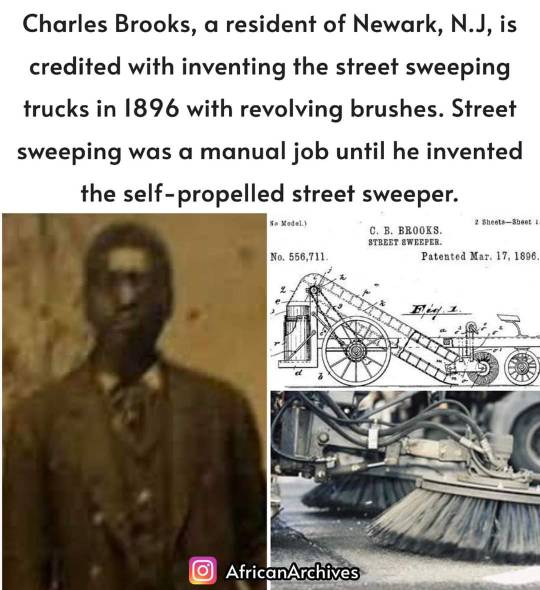
Charles Brooks, a resident of Newark, N.J, is credited with inventing the street sweeping trucks in 1896 with revolving brushes.
Street sweeping was a manual job until he invented the self-propelled street sweeper.
—Street sweeping was often a manual labor job in Brooks' time. Keeping in mind that horses and oxen were the main means of transportation — where there is livestock, there is manure. Rather than stray litter as you might see today in the street, there were piles of manure that needed to be frequently removed regularly. In addition, garbage and the contents of chamber pots would end up in the gutter.
The task of street sweeping was not carried out by mechanical equipment, but rather workers who roamed the street sweeping garbage up with a broom into a receptacle. This method clearly required a lot of labor, although it did provide employment.
#Charles Brooks#black inventor#self propelled#street sweeper#read more about him#reading is fundamental#knowledge is power#black history#african american history
258 notes
·
View notes
Video
youtube
AFRICAN AMERICANS HAVE NO CULTURE? BET!
This video highlights African American culture, illustrating how it is the most influential culture in the world.
#youtube#african american culture#black culture#black people#black influence#music#fashion#black fashion#soul food#black americans#culture#black pride#natural hair#naturalhair#hbcu#black inventors#black music#black art#black owned business#black women#black men#black children
15 notes
·
View notes
Photo
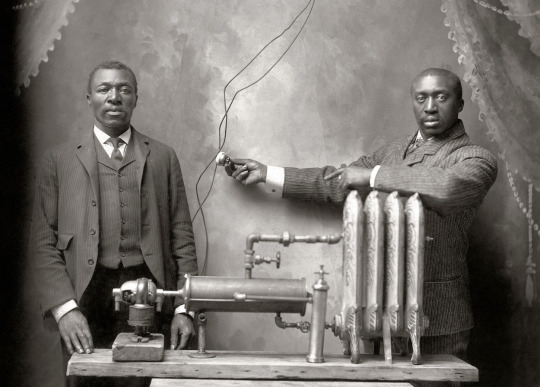
"Start of super heating union, St. Joseph, Missouri.” Photograph features inventor Charles S.L. Baker (on right) and his brother Peter in February 1906. Baker had just invented the Friction Heater which he is leaning on. It consisted of a motor (left) that turned a shaft inside a water jacket that heated up, so the fluid inside flowed into (thus warming) the radiator on the right. He got the idea originally when he had forgotten to grease the hubs of his father's wagon and the resulting heat caused the wheels to fail.
329 notes
·
View notes
Text
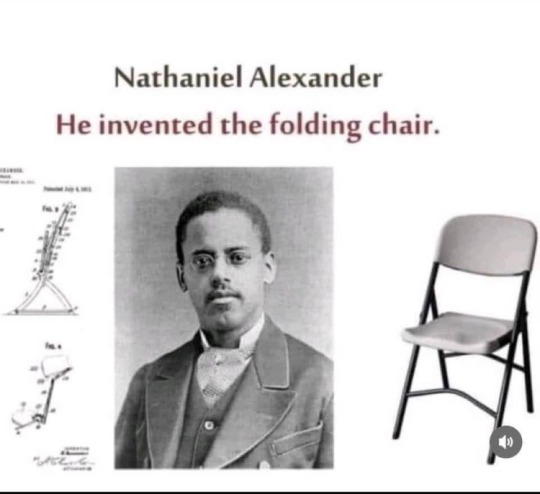
#blackhistory#nathaniel alexander#folding chairs#black man#black inventors#inventor#creativeminds#african american#do your own research#chairs#furniture#fold#have a seat
58 notes
·
View notes
Text
Black inventors

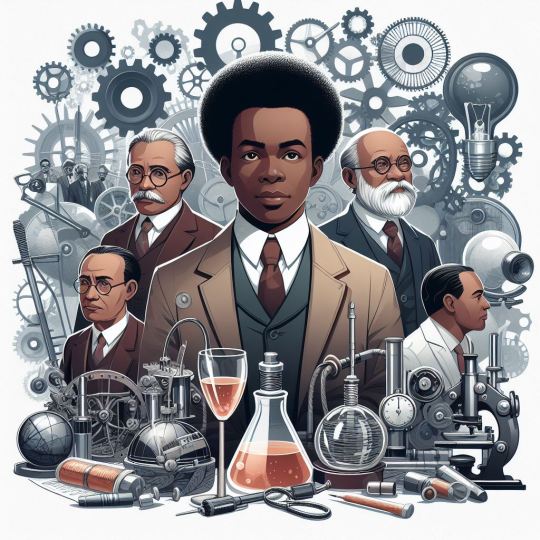

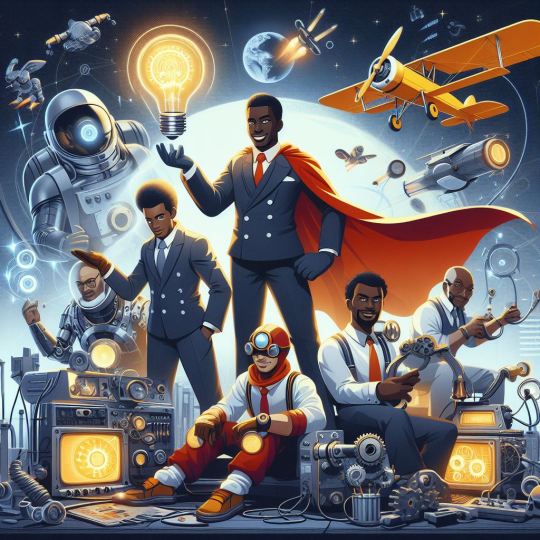
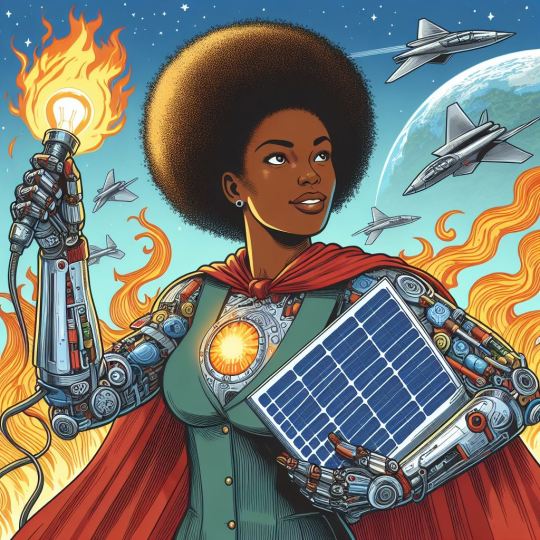

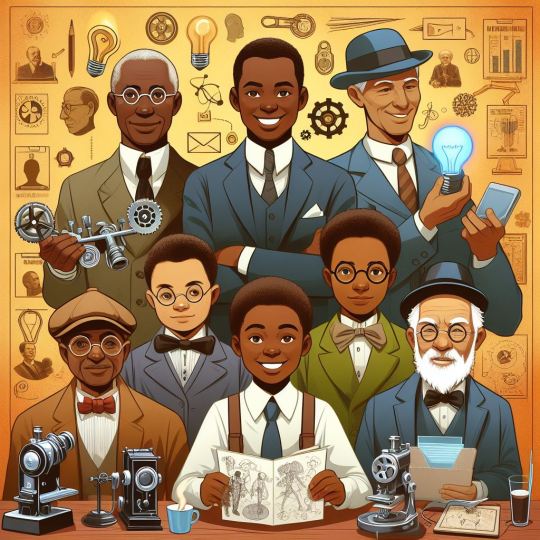




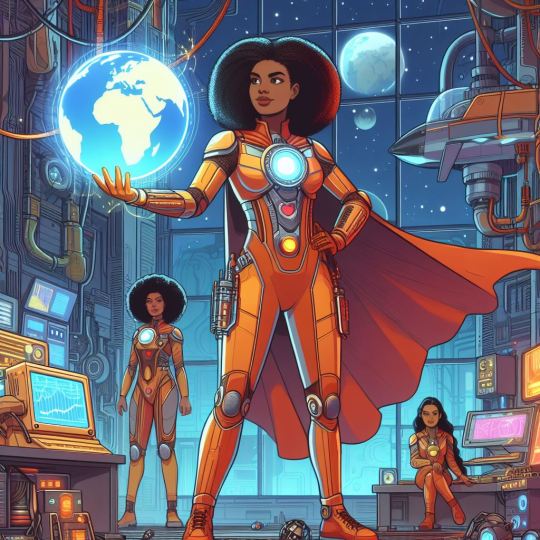


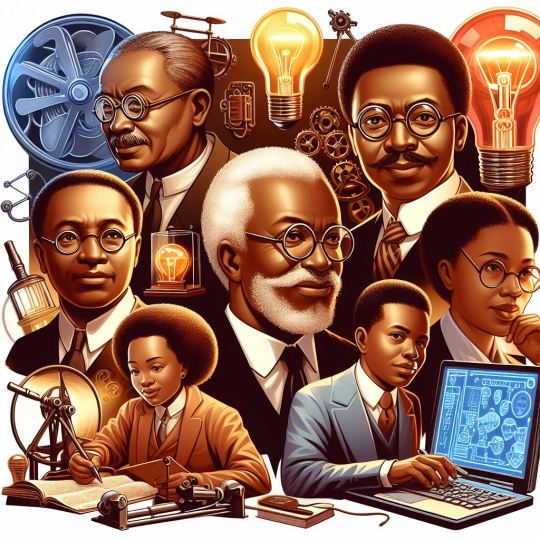
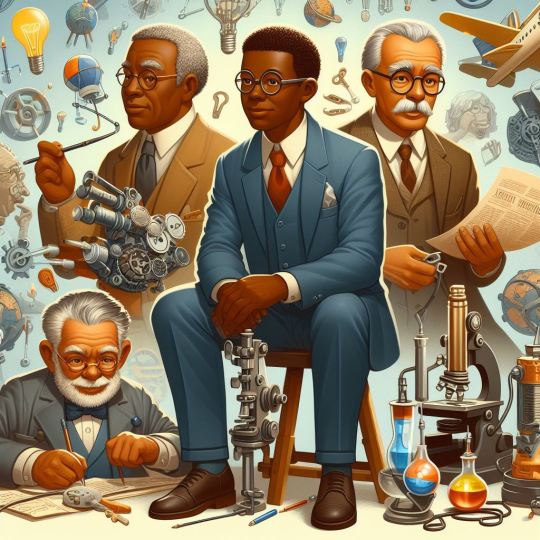
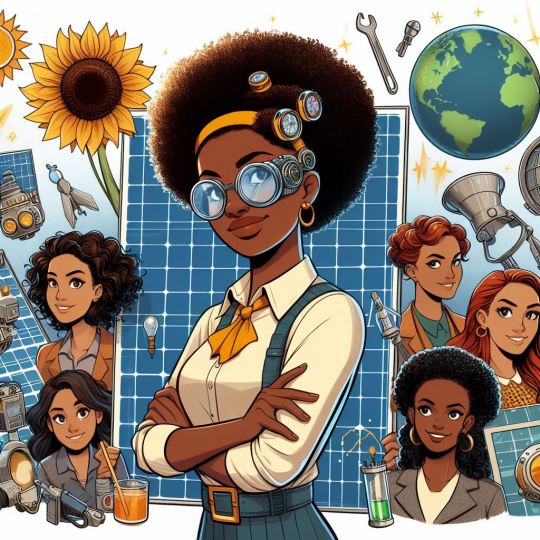
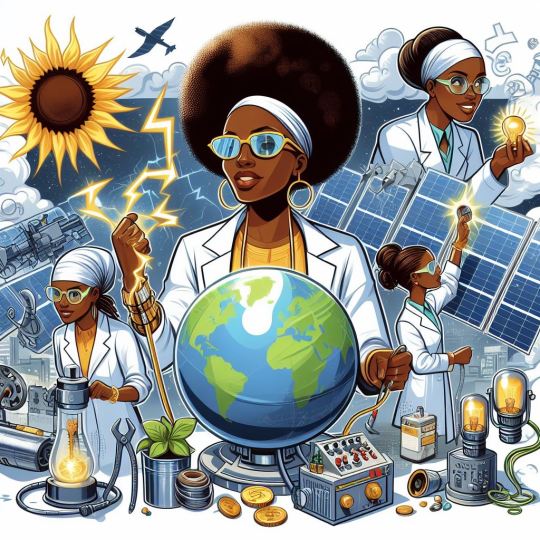
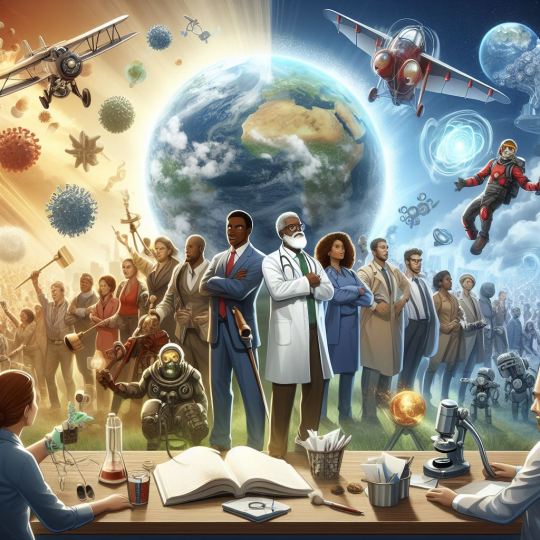
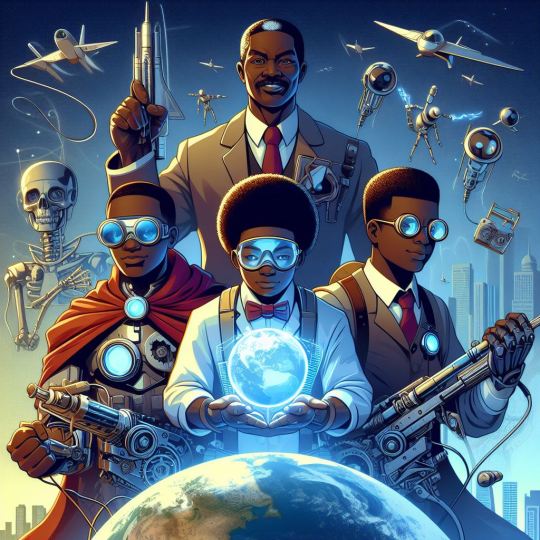
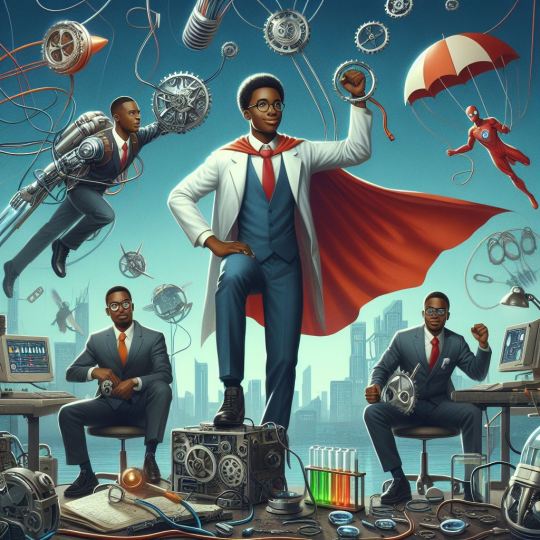
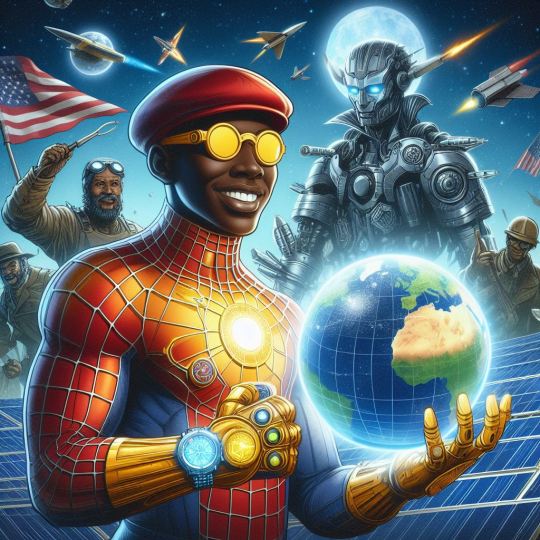

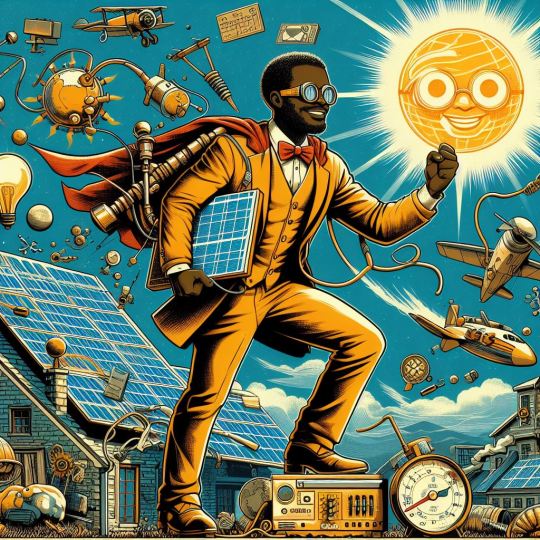
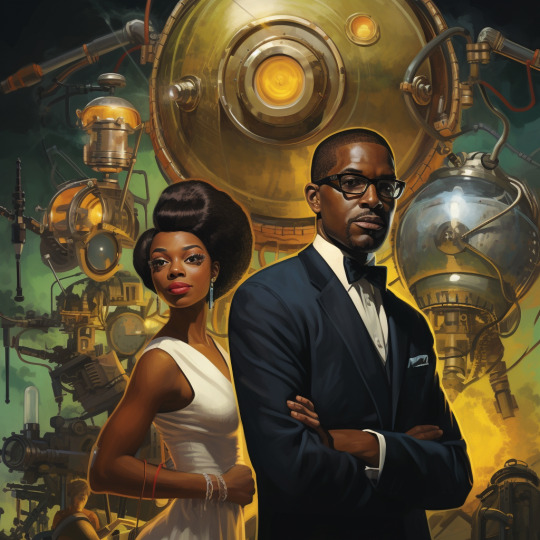
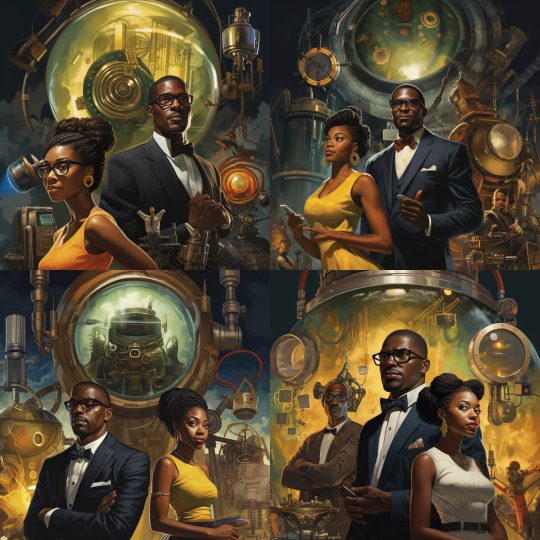
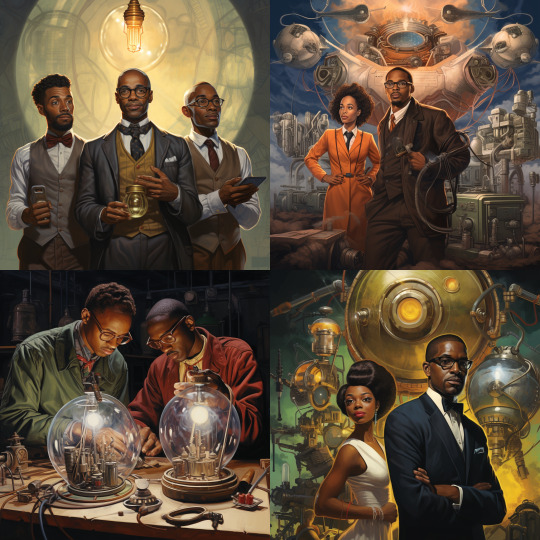



From Perplexity:
Famous black inventors have significantly contributed to various fields, from everyday household items to groundbreaking technological advancements. Here are some notable figures:
George Crum (1824-1914): A chef who is credited with inventing the potato chip in 1853[1].
Frederick McKinley Jones (1893-1961): Developed refrigeration equipment for trucks, trains, ships, and planes, receiving over 40 patents. His invention, the Thermo King, revolutionized the food and medical transport industries[1].
Granville T. Woods (1856-1910): Accumulated almost 60 patents, improving railroad functioning. Notably, he invented the induction telegraph system for train communication[1].
George Washington Carver (1864-1943): An agricultural chemist who developed 518 products from peanuts and sweet potatoes, including ink, dye, soap, and synthetic rubber[1].
Madam C.J. Walker (1867-1919): Became the first African American woman self-made millionaire by creating a line of hair products for African American women[1].
Garrett Morgan (1877-1963): Invented the traffic signal and a safety hood that served as a prototype for the gas mask[1].
Mary Beatrice Davidson Kenner: Patented the sanitary belt in 1957, a significant advancement in women's health and hygiene[1].
Thomas L. Jennings (1791–1859): The first African American to receive a U.S. patent, for a dry-cleaning process[4].
Patricia Bath (1942-2019): Invented a laser cataract treatment, becoming the first African American female doctor to receive a medical patent[4].
Mark Dean (1957-present): Holds over 20 patents, including contributions to the creation of the color PC monitor and the first gigahertz chip[4].
Elijah McCoy (1844-1929): Known for his invention of the automatic lubricator for oiling steam engines, leading to the phrase "the real McCoy" to denote something authentic[4].
These inventors have left a lasting impact on society, demonstrating ingenuity and perseverance in the face of challenges.
Citations: [1] https://www.oprahdaily.com/life/work-money/g30877473/african-american-inventors/ [2] https://www.parents.com/kids/education/world-changing-black-inventors-that-every-kid-should-know-about/ [3] https://www.black-inventor.com [4] https://www.biography.com/inventors/g46697619/famous-black-inventors [5] https://en.wikipedia.org/wiki/List_of_African-American_inventors_and_scientists
From Gemini (formerly Bard):
20 Famous Black Investors with Short Descriptions:
Dr. Shirley Jackson: First Black woman to earn a doctorate in nuclear physics, invested in research and development for the U.S. Department of Defense.
Robert F. Smith: Founded Vista Equity Partners, a private equity firm with over $85 billion in assets under management. Known for his philanthropic endeavors.
Oprah Winfrey: Media mogul and investor, known for her investments in cable channels, production companies, and Weight Watchers.
Udayan I. Lekhraj: Founded CMG Partners, a private equity firm specializing in healthcare investments. Advocate for diversity and inclusion in venture capital.
Catherine Hughes: Founded Urban One, a media company serving the African American community. First Black woman to chair a publicly traded company in the U.S.
Rodney Bryant: Co-founded JUST Capital, a firm that measures and incentivizes corporations to prioritize stakeholder capitalism.
Ellen Johnson Sirleaf: Former President of Liberia, Nobel Peace Prize winner. Focused on economic development and investment in her country.
Ronald Lauder: CEO of Estee Lauder Companies, known for his investments in the beauty industry and philanthropic work.
Charles R. Bronfman: Chairman of The Seagram Company Ltd., invested in various industries including entertainment, real estate, and philanthropy.
John Rogers Jr.: Founded Ariel Investments, a mutual fund company with over $28 billion in assets under management. Advocate for responsible investing.
Marc Morial: Former mayor of New Orleans, currently president of the National Urban League. Focused on economic empowerment of Black communities.
Ronald Watkins: Founding CEO of Watkins Investing Group, invests in real estate and businesses within the Black community.
Melody Hobson: President and CEO of Ariel Investments, known for her work on financial literacy and diversity in boardrooms.
Aisha Evans: Founded BE Capital, a venture capital firm focused on Black and Latinx tech entrepreneurs.
Kevin Hart: Comedian and investor, known for his investments in production companies, streaming platforms, and sports teams.
Jay-Z: Rapper and entrepreneur, known for his investments in music streaming, sports teams, and venture capital funds.
Will Smith: Actor and investor, known for his investments in production companies, media platforms, and venture capital funds.
Serena Williams: Tennis champion and investor, known for her investments in venture capital funds focused on women and diverse founders.
Rihanna: Singer and entrepreneur, known for her investments in beauty brands, fashion lines, and technology startups.
LeBron James: Basketball player and investor, known for his investments in media companies, production companies, and technology startups.
Please note: This list is not exhaustive and can be debated in terms of individual importance and impact.
Reading List on Black Inventors:
Black Inventors: Lives That Mattered by Darlene R. Medford
Hidden Figures: The American Dream and the Untold Story of the Black Women Mathematicians Who Helped Win the Space Race by Margot Lee Shetterly
Lifting the Veil: Celebrating the Unsung Heroes of Black History by Michael Hill
Lost Genius: The Forgotten Black Inventors Who Changed the World by Dennis Freeman
Pioneering Women in American Mathematics: From Agnes Scott to Emmy Noether by Pamela Prochazka
Black Inventors in Science and Technology by Shirley J. Smith
A Colored Man's Reminiscences of James M. Whitfield: With Recollections of the Early Struggles of Colored Men in Boston by Wilbur H. Siebert
Inventing the Future: Black Inventors in Science and Technology by Geneva Gay
African Americans in Science, Math, and Invention by Darlene R. Medford
Black Inventors in the United States by Darlene R. Medford
This list offers a variety of books covering different periods and areas of innovation by Black inventors. Consider exploring further based on your specific interests.
I hope this information is helpful!
#african american history#black history month#black history month 2024#dalle3#midjourney#black inventors#blackhistorymonth#africanamericanhistory#afrofuturism#solar punk#steampunk
16 notes
·
View notes
Link
Jackson State University (JSU) proudly announces its historic recognition as the recipient of the prestigious Founders Award from the National Academy of Inventors (NAI). This achievement makes JSU the first Historically Black College and University (HBCU) and the first institution in Mississippi to be honored.
3 notes
·
View notes
Text
Dennis Weatherby: Developer Of Cascade Dish Detergent Chemical Formula
African-American scientist Dennis W. Weatherby created the chemical formula for Cascade dish detergent. Click the link to learn more or listen via podcast. #Blackmail4u #Blackhistory #BlackHistoryFact #DennisWeatherby #STEM #BlackInventor
Welcome To Black Mail! Where we bring you Black History, Special Delivery. African American scientist Dennis Weatherby is responsible for the Cascade dish detergent chemical formula. He was born in Brighton, Alabama, on December 4, 1959. Weatherby developed a love for science as a child. Following high school he attended Central State University in Wilberforce, Ohio, on a football scholarship.…

View On WordPress
#African American History#Black History#Black History Month#black inventor#blackmail4u#Cascade Dish Detergent#STEM
43 notes
·
View notes
Text
HAPPY BLACK HISTORY MONTH!
4 notes
·
View notes
Text

Smithsonian National Museum of African American History and Culture: On this day, February 2nd in 1897, Alfred L. Cralle patented the ice cream scoop. Cralle noticed the difficulty ice cream servers were having scooping ice cream with one hand and holding the cone in the other while working in a Pittsburgh hotel. The newly patented design kept the ice cream from sticking and is still widely used today.
#black history#african american history#inventors#black inventors#ice cream#virginia born#local history
20 notes
·
View notes
Text
On This Day Lewis Howard Latimer Was Born September 4 1848
Lewis Howard Latimer (1848–1928) was an African-American inventor, engineer, and patent draftsman who made significant contributions to the fields of electrical engineering and the development of the telephone and incandescent light bulb. He played a vital role in the early days of electric lighting and power distribution. Latimer was born on September 4, 1848, in Chelsea, Massachusetts, to…
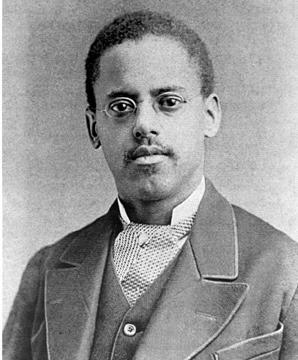
View On WordPress
#African-American Inventors#Latest#Lewis Howard Latimer#telecommunications#The Birthday Of#Trending News
5 notes
·
View notes
Text
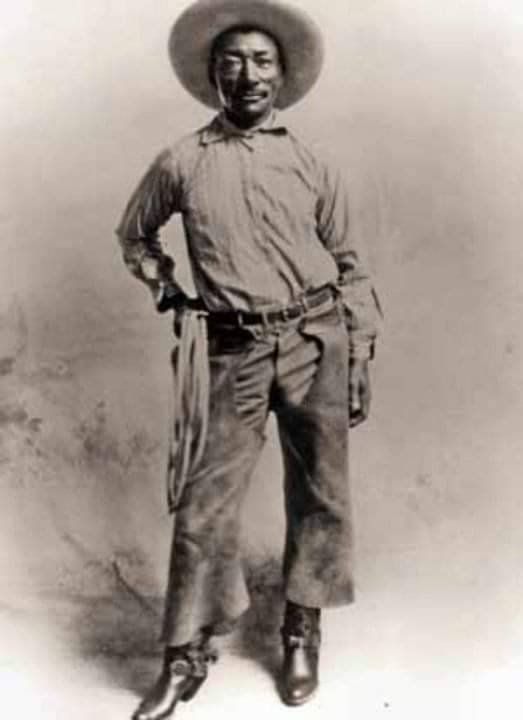
Bill Pickett (ca 1870-1932), African American Cowboy inventor of "bulldogging," a rodeo technique to wrestle a steer to the ground.
From 1905 to 1931, the Miller brothers' 101 Ranch Wild West Show was one of the great shows in the tradition begun by William F. "Buffalo Bill" Cody in 1883. The 101 Ranch Show introduced bulldogging (steer wrestling), an exciting rodeo event invented by Bill Pickett, one of the show's stars.
Riding his horse, Spradley, Pickett came alongside a Longhorn steer, dropped to the steer's head, twisted its head toward the sky, and bit its upper lip to get full control. Cowdogs of the Bulldog breed were known to bite the lips of cattle to subdue them. That's how Pickett's technique got the name "bulldogging." As the event became more popular among rodeo cowboys, the lip biting became increasingly less popular until it disappeared from steer wrestling altogether. Bill Pickett, however, became an immortal rodeo cowboy, and his fame has grown since his death.
He died in 1932 as a result of injuries received from working horses at the 101 Ranch. His grave is on what is left of the 101 Ranch property near Ponca City, Oklahoma. Pickett was inducted into the National Rodeo Hall of Fame in 1972 for his contribution to the sport.
Bill Pickett was the second of thirteen children born to Thomas Jefferson and Mary Virginia Elizabeth (Gilbert) Pickett, both of whom were former slaves. He began his career as a cowboy after completing the fifth grade. Bill soon began giving exhibitions of his roping, riding and bulldogging skills, passing a hat for donations.
By 1888, his family had moved to Taylor, Texas, and Bill performed in the town's first fair that year. He and his brothers started a horse-breaking business in Taylor, and Bill was a member of the national guard and a deacon of the Baptist church. In December 1890, Bill married Maggie Turner.
Known by the nicknames "The Dusky Demon" and "The Bull-Dogger," Pickett gave exhibitions in Texas and throughout the West. His performance in 1904 at the Cheyenne Frontier Days (America's best-known rodeo) was considered extraordinary and spectacular. He signed on with the 101 Ranch show in 1905, becoming a full-time ranch employee in 1907. The next year, he moved his wife and children to Oklahoma.
He later performed in the U.S., Canada, Mexico, South America, and England, and became the first black cowboy movie star. Had he not been banned from competing with white rodeo contestants, Pickett might have become one of the greatest record-setters in his sport. He was often identified as an Indian, or some other ethnic background other than black, to be allowed to compete.
Bill Pickett died April 2, 1932, after being kicked in the head by a horse. Famed humorist Will Rogers announced the funeral of his friend on his radio show. In 1989, years after being honored by the National Rodeo Hall of Fame, Pickett was inducted into the Prorodeo Hall of Fame and Museum of the American Cowboy at Colorado Springs, Colorado. A 1994 U.S. postage stamp meant to honor Pickett accidentally showed one of his brothers.
#Bill Pickett#african american#cowboy#inventor#of#bulldogging#rodeo#technique#very talented#read about him#reading is fundamental#black history#knowledge is power
25 notes
·
View notes